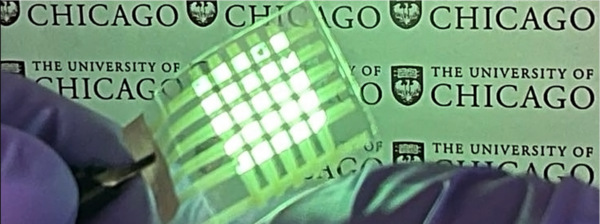An OLED material developed by University of Chicago researchers can be folded in half or stretched to more than twice its length while still generating light.
According to the University of Chicago, the Nature Materials-described material might be used to make flexible screens for wearable electronics, health sensors, and folding products.

The new material is not a display, but it might be utilized to make flexible fabric-like displays in the future.
Researchers wanted a stretchy OLED-like material.
These cutting-edge OLED screens utilise brittle, non-stretchable materials. In a press statement, Sihong Wang, co-author of the study article, said, “Our goal was to create something that maintained OLED electroluminescence but with stretchable polymers.”
Juan de Pablo, a molecular engineering professor at the University of Chicago, and Wang, an assistant professor, led the research.
“This is the material you need to finally make flexible screens. “This work is really foundational and I expect it to allow many technologies we haven’t even thought of,” de Pablo said.
OLED panels power most high-end devices like the iPhone 14 Pro and Galaxy S23 Ultra. Small organic molecules sandwich electrical conductors in OLED screens. When current is applied, molecules glow brightly.
OLED displays are made by arranging enough molecules and conductors. OLED displays provide better visual quality than LED and LCD technology and use less energy.

Wang believes OLED display materials are fragile and inflexible.
“We developed atomic models of the new polymers of interest and simulated what happens to these molecules when you pull on them and bend them. “Now that we understand these properties at a molecular level, we have a framework to engineer new materials with optimized flexibility and luminescence,” added de Pablo.
They constructed numerous flexible light-emitting polymer prototypes using computer predictions. The University found the novel materials flexible, brilliant, robust, and energy efficient, as predicted by its computer simulations.
A flexible material could be utilized to display information and in light-dependent wearable sensors. Smartwatches illuminate blood vessels to assess heart rate and oxygenation.

